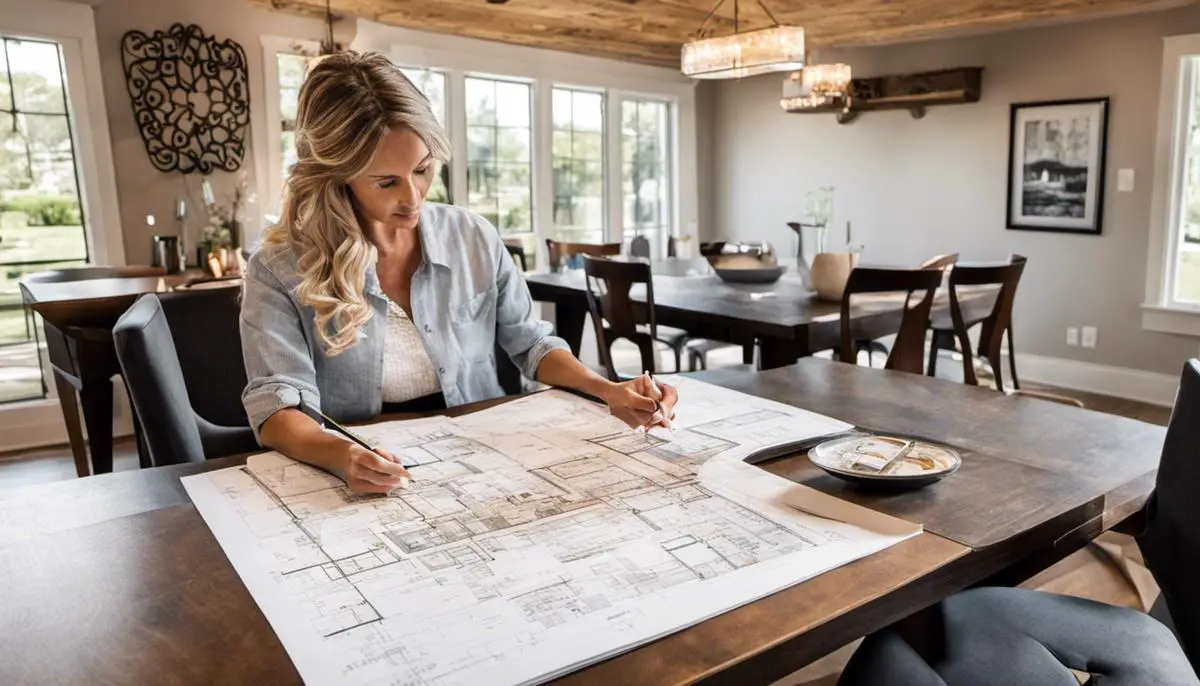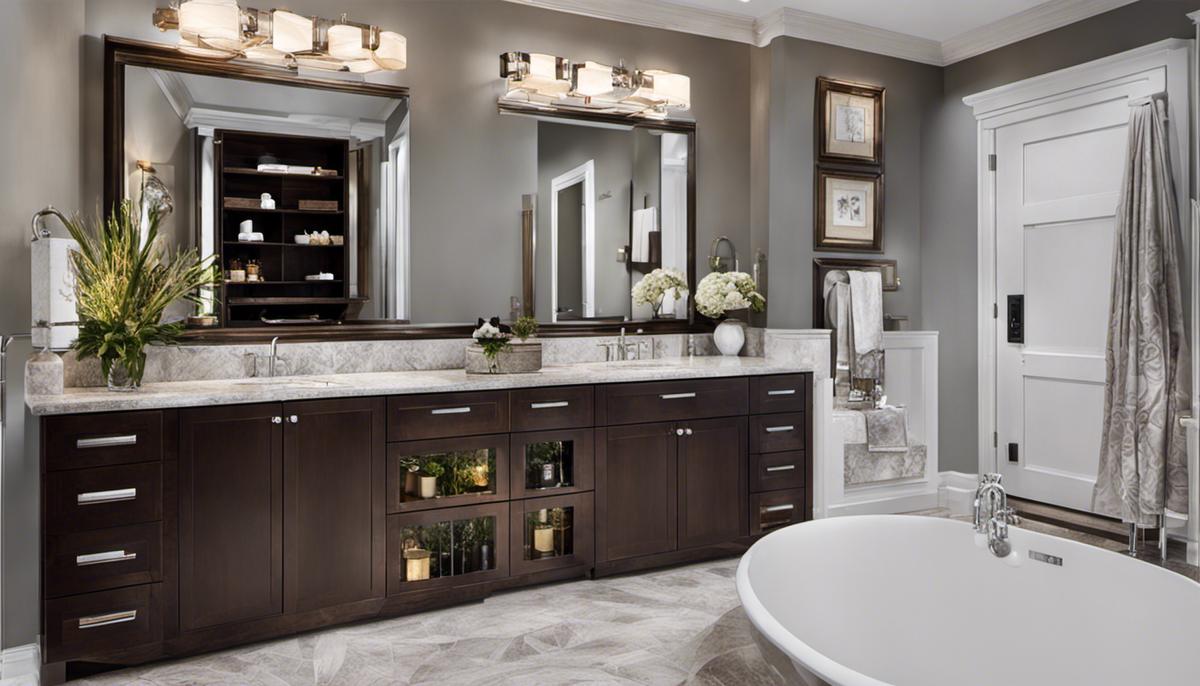Embarking on a home remodel? This journey can seem daunting but with the right planning, budgeting, and understanding of legal considerations, you can transform your living space. This guide aims to equip you with knowledge about sketching your design, determining your source of materials, and creating an effective project timeline. It explores deeper into the financial aspects of remodeling, including budgeting and potential ways to keep costs low, as well as preparing for any unexpected expenses. Also, it delves into critical legal matters like permits and building codes. We also weigh in on the DIY approach against hiring professionals and shed light on which projects are typically amenable to the DIY approach.
Planning and Design
Understanding the Remodeling Process
To create a comprehensive plan for your remodeling project, start by defining the scope of work. This includes identifying what you want to achieve with the remodel and any specific changes you are considering. Do you want to completely rebuild a room, or are you looking to update certain features? This decision will determine the level of planning, design input, and budget required.
Sketching the Design
Next, sketch your design so that you can visualize what the final output will look like. If you’re not confident in your drawing skills, consider getting the help of an architect or interior designer. Make sure your design not only improves aesthetics but also functional utility. It is important to note that the design should be in line with building codes and regulations of your locality.
Selecting and Purchasing Materials
Before you start shopping, do some research to find out what materials are suitable for your purposes. Determine what materials you will need and decide whether you want to purchase them yourself or if it would be more convenient for your contractor to do it. Always try to balance between quality and affordability. Comparing prices at different suppliers can help you make cost-effective decisions.
Signing up for email newsletters from home improvement stores can alert you to sales and discounts that could save you money on your remodeling project materials.
Creating a Project Timeline
Creating a timeline for your project is crucial in keeping everything on track. Break down your remodel into individual tasks such as evaluating contractors, purchasing materials, demolition, construction, and review.
Remember to consider unexpected delays and build flexibility into your timeline. Advise your contractor of your timeline at the beginning of the project.
For larger projects, it can be beneficial to use project management software to keep track of your progress and make sure all tasks are being completed on schedule. Keep in constant communication with your contractor to be aware of any potential setbacks or advances in schedule.
Hiring Professionals
While some tasks can be performed on your own, for a larger remodel, you’re likely going to need to hire professionals. This includes architects, builders, and potentially even interior designers. When hiring, always check references and prior work to ensure you’re hiring a reputable professional.
Remember, the success of your remodel heavily relies on detailed planning and organization. It might look demanding and requiring a significant effort, but the end results are usually worth it.

Budgeting
Creating a Budget for Your Remodel
Devise a financial plan considering every possible expense. Start with the larger items such as plumbing, electrical fittings, and construction costs. Next, estimate the prices of the interior elements, like flooring, cabinetry, appliances, and paint. Don’t forget the miscellaneous expenses such as permit fees, dumpster rentals for waste disposal, or temporary housing during the remodel. Finally, remember to include a contingency fund, around 10-15% of the total budget, for any unexpected costs that could arise.
Exploring Cost-Saving Options
There are numerous potential cost-saving options for your remodel. Consider doing some jobs yourself, like painting or demolition, or even keeping some of the existing materials. While hiring professionals can be costly, certain tasks require their expertise, so be careful when choosing which tasks you take on. Reuse or recycle materials where possible, or look for discounted items. Remnants for countertops or lightly damaged items can be a significant source of savings.
Planning Purchases
Time your purchases to take advantage of sales and discounts. Appliances and materials often go on sale during particular periods of the year; research these dates and plan accordingly. You can also benefit from buying in bulk or from wholesale dealers for certain materials.
Understanding How to Handle Unexpected Costs
No matter how thoroughly you plan, unexpected expenses are bound to emerge in home remodeling projects. Your contingency fund will be critical in managing these costs. However, try to prevent such situations by hiring a professional home inspector to detect potential issues that could turn into larger expenses later on. If surprise costs do arise, evaluate your budget and see where else you might be able to cut back.
Involving a Financial Advisor
Consider consulting with a financial advisor or a bank loan officer if the remodel involves a significant sum or if you plan to take out a loan. Their expert advice could help you navigate financial tools, like loans or lines of credit, and they can help you understand the terms and conditions, along with any potential tax advantages.
Following these financial planning steps will support a smoother, more affordable remodeling process. The key is to plan thoroughly, anticipate unexpected costs, exploit potential cost-saving opportunities, and delay non-essential tasks if necessary. Efficient financial planning can turn your home remodel from a stressful task to an exciting new venture.

Legal Considerations
Understanding Building Codes and Permits
Before starting your remodeling project, it is compulsory to familiarize yourself with your local building codes and obtain any necessary permits. Building codes are regulations established by local or state authorities that set standards for the design, construction, alteration, and maintenance of buildings to ensure safety and health standards. These codes often pertain to factors like structural integrity, fire safety, electrical systems, plumbing and sanitation, and energy conservation. Neglecting them can lead to penalties, the need to redo work, or even legal trouble.
To comply with these codes, begin by researching local building ordinances or seeking information from your local building department, issued by your city, county, or state governmental office. Remember, building codes can vary significantly depending on your location. Considering the type of remodel you’re planning (e.g., bathroom, kitchen, basement), the codes could be different. Should your remodeling plan involve structural changes, there might be additional rules to adhere to.
Obtaining Necessary Permits
Next, determine whether your remodel requires a permit. Small projects (like painting or installing new countertops in a kitchen), often do not require permits. On the other hand, significant structural changes, altering the footprint of your home, or even some types of electrical or plumbing work commonly require permits. Getting a building permit ensures that your renovation project is lawful, inspected for safety and compliance, and could prevent unforeseen difficulties when selling your property in the future.
To apply for a remodeling permit, you’ll typically need to submit plans of your proposed project to the local building department. These plans should clearly show the current structure and the planned changes. After approval, inspections occur at various stages to ensure work is done correctly according to code.
Hiring Professionals
When considering complex renovation projects, hiring professionals such as contractors or architects can be beneficial. Professionals are acquainted with building codes and regulations in your area and can navigate the permit process with ease – preventing future issues. They can also provide realistic cost and timeline estimates.
When selecting a contractor, ensure they are licensed and insured and have positive customer reviews. A reputable professional will always ensure the remodeling project meets all regulatory requirements. Likewise, if your remodel involves substantial structural changes or redesigns, consider hiring an architect experienced in overseeing large-scale projects.
Given the complexity of legal aspects related to home remodeling, understanding building codes, permits, and hiring professionals can ensure a successful and legal renovation project. Do not overlook these steps to avoid possible issues or repercussions down the line.

DIY vs Hiring Professionals
Understanding DIY Remodeling and Professional Remodeling
Before embarking on a remodeling project, it’s crucial to assess the advantages and disadvantages of both DIY and hiring professionals. By understanding these pros and cons, you can make an informed decision that suits your budget, time constraints, and the project’s complexity.
DIY Remodeling: Pros and Cons
Starting with DIY remodeling, this approach allows you to save money, as you won’t need to pay for labor costs associated with hiring a professional. You also have full control over the project, ensuring everything is completed according to your specific preferences. DIY projects can also provide a sense of accomplishment and pride.
However, this approach has its downsides. Most notably, projects may take longer to complete if you’re working alone or lack experience. You might even make costly mistakes that require professional help to correct. Also, some projects can be physically demanding or even dangerous if you don’t have the proper training or equipment.
Professional Remodeling: Pros and Cons
On the other hand, hiring professionals can ensure that your remodel is done efficiently and correctly. Professionals have the necessary skills, knowledge, experience, and tools to handle complicated projects. They can also handle any necessary permits or inspections required for the remodel.
Nonetheless, professional remodeling is often more expensive due to labor costs. Also, you may have to work around the contractor’s schedule, which can extend the project’s timeline. Lastly, you may encounter difficulties finding a reliable and trustworthy contractor.
DIY-Friendly Projects
While some remodeling projects require professional expertise, others are more DIY-friendly. These usually include painting, minor kitchen updates like replacing hardware or installing a new backsplash, basic landscaping, and simple building projects like creating shelves. These tasks require fewer specialized skills and pose less risk than more complex remodels like bathroom renovations or room additions.
In conclusion, it’s crucial to thoroughly investigate whether a DIY approach or hiring professionals would be more suitable for your remodel project. Starting with understanding the pros and cons of each approach can significantly assist in making an informed decision. You should also consider the project’s complexity to determine whether it’s manageable as a DIY or better left to professionals.

With a solid plan, a sensible budget, legal matters squared away, and a sound decision on whether to DIY or engage professionals, your remodeling project is off to a great start. Remember, successful project management is integral to the process, as are unexpected costs that need to be accommodated in your budget. Knowledge about permits and building codes helps ensure your project is up to standard and legal. Weighing the advantages and disadvantages of DIY versus hiring professionals can place you in a better position to make the best decision for your needs. Let this be a stepping stone towards creating a home that caters more accurately to your wants, needs, and aesthetic sensibilities.









Leave a Reply